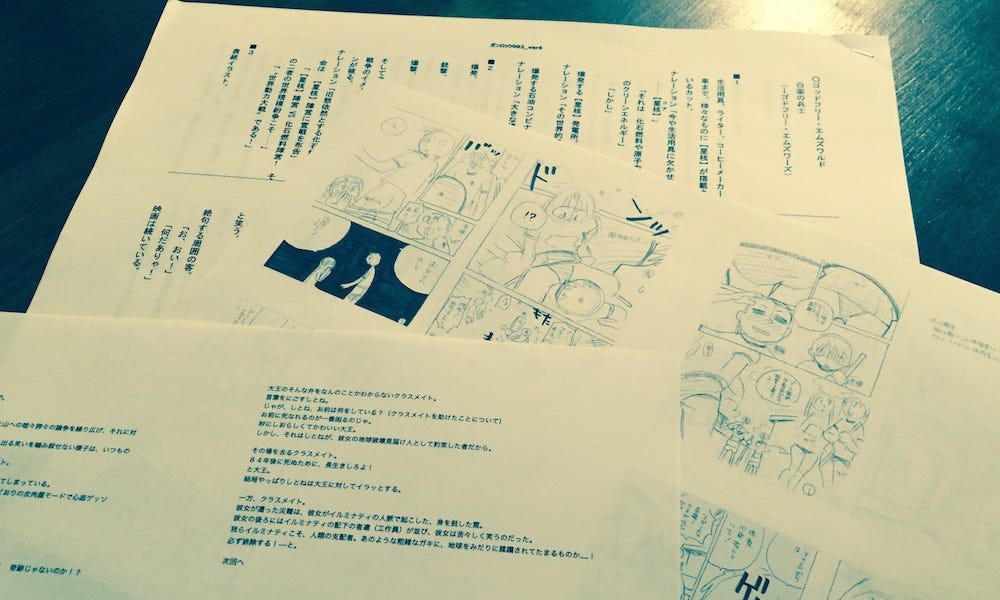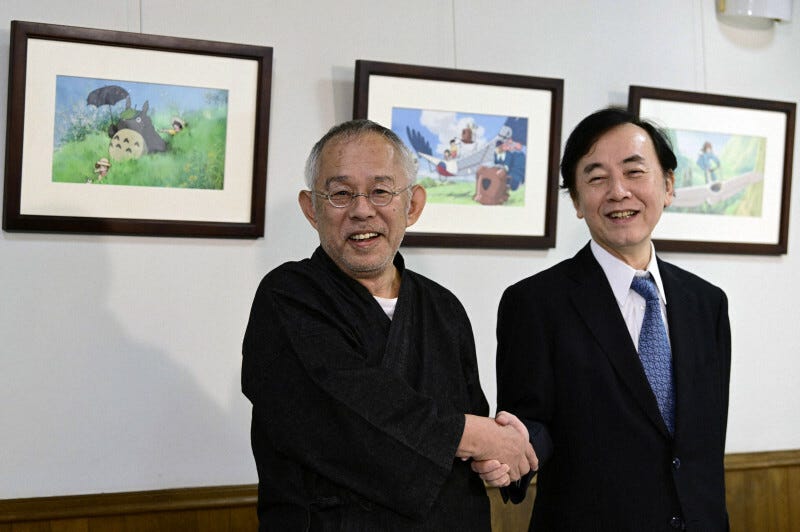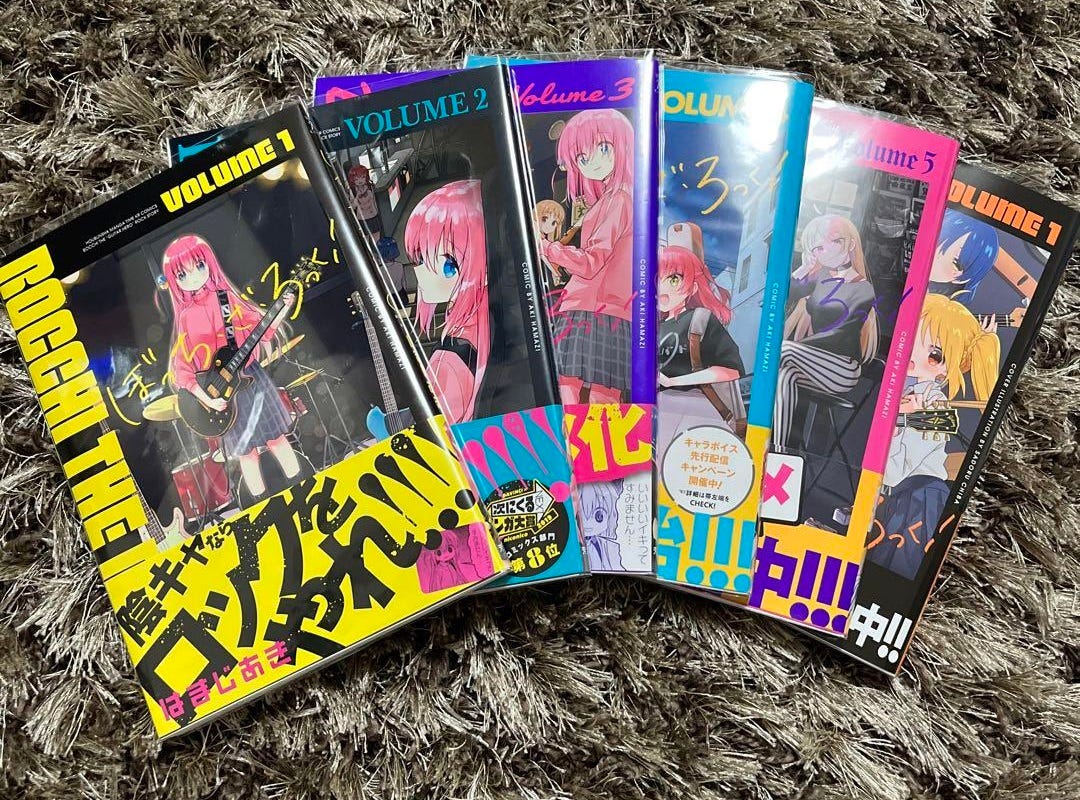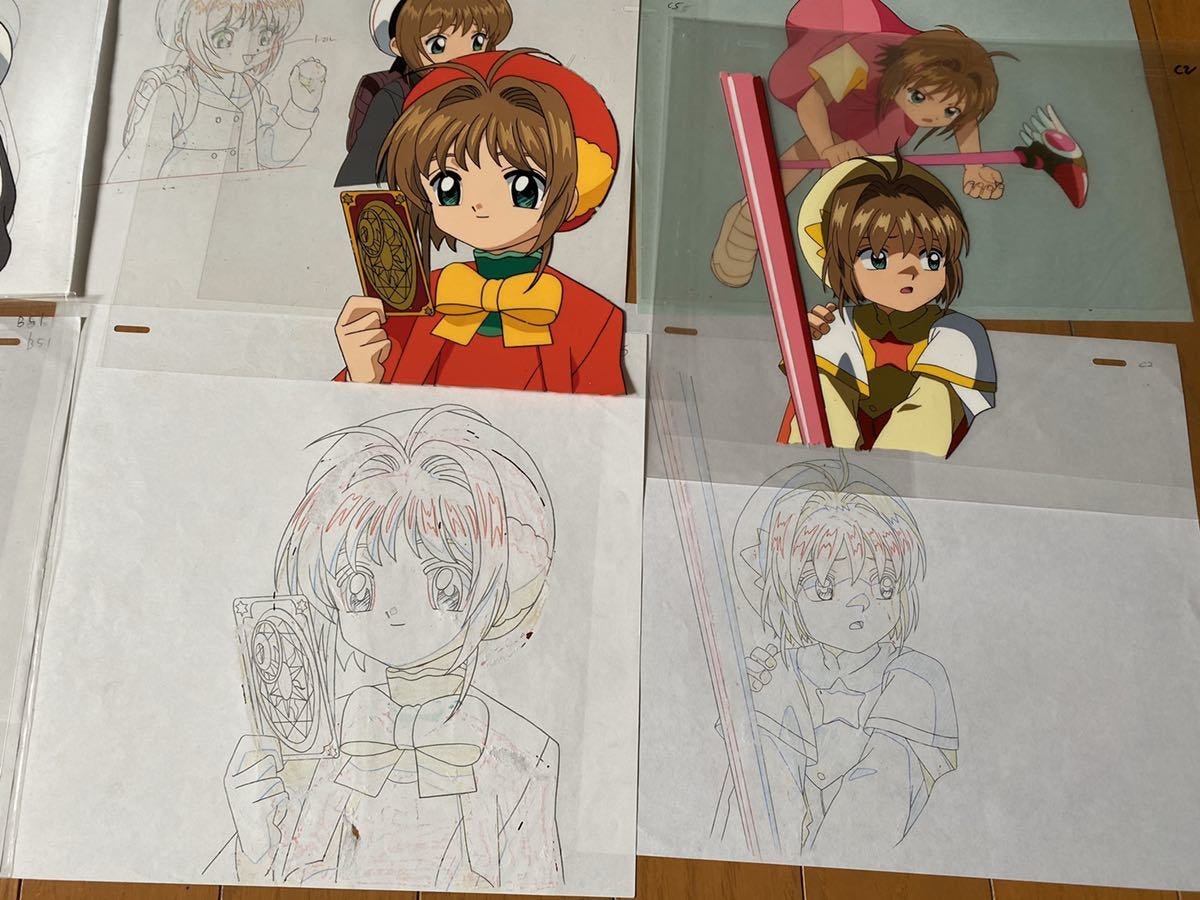Writers are in high demand as manga grows
Plus: Nippon TV makes Studio Ghibli a subsidiary; Anime drove up sales of musical instruments; Anime and manga museum plan faces some resistance; and more
This is your weekly Animenomics briefing, covering the business of anime and manga. Today is Wednesday, September 27, 2023.
In case you missed it: Studio Ponoc, founded by former Studio Ghibli animators, has released a trailer for its latest anime film The Imaginary, based on a children’s novel by English writer A.F. Harrold and illustrated by Emily Gravett.
Story writers in high demand in roaring manga market

As the manga market grows domestically and abroad, publishers and distributors are trying to keep up with reader appetite and hunting for new creators who will write the next hit title.
Why it matters: As previously reported by Animenomics, manga is just about the only category in Japan’s publishing industry that’s still growing thanks to digital distribution innovations.
By the numbers: The number of unique manga volumes newly published last year rose 5.7 percent to a record 14,187, according to data from the Research Institute for Publications.
Between July 2022 and August 2023, more than 400 titles were released by digital manga app LINE Manga alone.
What’s happening: Manga publishers and distributors are doing all they can to sign new writers, from reaching out to companies that train creative writers to holding their own author competitions, the Nikkei reports.
Tech company Indent, which created the novel writing and editing platform Nola, organizes a program that trains writers over a period of three to four months to create original stories. Compared to last year, publishers have so far signed more than double the number of contracts for stories written by authors trained by Indent.
Publishers like Shueisha and Kodansha are holding contests for their manga magazines. Girls’ manga magazine Ribon collaborated with web novel site Maho no i-Land to launch a novel contest with the premise of adapting the winning title into manga.
Earlier this summer, Shueisha’s Shonen Jump+ digital manga platform also launched an app to seek out new talent. World Maker helps aspiring manga writers to create storyboard drafts for their story ideas without needing to be able to draw.
Zoom out: While hit manga titles have traditionally been written and drawn by the same person, there is an increasing number of popular titles created under a division of labor system of separate writers and artists.
A list of the top ten best-selling manga for the first half of 2023 at Animate, an anime and manga specialty store, includes titles like Blue Lock and Oshi no Ko that were written and illustrated by different people.
Bottom line: Separating the work of writers and illustrators lowers the barrier of entry for new creators to enter the manga market, helping manga publishers and apps meet the demands of a hungry readership.
Nippon Television acquires Studio Ghibli as subsidiary

Japanese broadcaster Nippon Television announced last week that it will acquire a 42.3 percent ownership stake in Studio Ghibli, making the anime film producer a subsidiary.
Why it matters: Studio Ghibli’s share transfer to Nippon TV makes it the second major anime company in as many months to be acquired by a larger conglomerate because of a lack of successors.
Last month, Osaka-based visual novel and anime producer Visual Arts was sold to Chinese technology conglomerate Tencent Holdings.
How it happened: Studio Ghibli president Toshio Suzuki told reporters that he initiated the conversation of a sale during a hot spring resort visit last year with Nippon TV chairman Yoshikuni Sugiyama.
The broadcaster has a long history of supporting the studio’s projects, such as funding the production of Kiki’s Delivery Service and supporting the opening of Ghibli Museum.
Nippon TV has also aired Nausicaä of the Valley of the Wind and other Studio Ghibli films on its popular Friday Roadshow program since 1985, including ahead of the opening of The Boy and the Heron in theaters in July.
The details: Suzuki will step back from management of Studio Ghibli and become chairman. Nippon TV executive managing director Hiroyuki Fukuda was named the studio’s new president.
“I had hoped that [Hayao] Miyazaki’s eldest son, Goro Miyazaki, would take over the company,” Suzuki told reporters. “However, [the elder] Miyazaki remained opposed to this idea until the very end.”
By the numbers: Although Nippon TV has not revealed the price of its share purchase, one estimate based on Studio Ghibli’s financial results for the fiscal year ending March 2023 puts the company’s minimum value at ¥28.1 billion (US$188 million).
What we’re watching: Nippon TV owns the Hulu Japan video streaming service, which is independent from its American counterpart, but Fukuda told reporters it doesn’t plan to put Studio Ghibli’s films on the platform yet.
Sugiyama also revealed that the broadcaster’s two other anime production subsidiaries, Madhouse and Tatsunoko Production, are facing limited growth prospects, spurring the investment in Studio Ghibli.
Clippings: ‘Bocchi’ rocks demand for band instruments

Sales of band equipment in Japan rose last year, helped by the popularity of the anime Bocchi the Rock!, which aired from October to December. (Teikoku Databank)
Japan’s largest musical instruments retailer Shimamura Music saw a electric guitar sales rise 73 percent in the second half of the year. Sales of amplifiers and other equipment were also up, especially among first-time buyers.
Retail chain Toranoana, which specializes in self-published manga and other fan merchandise, saw sales rise 7.1 percent for the fiscal year ending August 2023 to a record ¥33.1 billion (US$222 million). (Press release)
The retailer has closed almost 30 stores in the past year, including its flagship Akihabara branch, as it pivots to a store-in-a-store model. It completed a new logistics center to handle mail order and consignment distribution and is also growing its creator-focused platform Fantia.
Crunchyroll is phasing out the Right Stuf online retail brand and migrating its products to the Crunchyroll Store platform next month. (Anime News Network)
The Iowa-based e-commerce company saw the departures of its founder and vice president in the last ten months after acquisition by Crunchyroll. It also informed the state’s workforce development agency in July that it would lay off 29 employees in August.
Anime production companies left out of job boards
“If there’s a site that says, ‘You can find information on anime-related employment opportunities in one shot by looking here!’, I think that alone will increase visibility.”
— Kazuya Masumoto, TRIGGER animation producer
Context: Masumoto told anime journalist Atsushi Matsumoto in a live-streamed interview in February that production studios and small businesses in the anime industry rarely advertise jobs on Rikunabi and Mynavi, the two largest job boards operating in Japan, because of the cost of creating listings.
Why it matters: Job boards run by HR technology companies are growing in popularity among young job-seekers, and anime companies are losing out on potential talent by being shut out from such platforms.
“I tell university students, ‘You can’t find anything by searching there, so you should just check out the official websites and events of anime companies on your own,’ but this is still not well known,” Masumoto said.
Read the two-part transcript of the interview (in Japanese) on ASCII Business.
Anime professionals resistant to national museum plan

As the Japanese government revives its plans for a national art museum for anime and manga, some in the anime industry are hesitant to embrace the effort, saying it would be a burden on existing resources.
Why it matters: The anime industry’s muted response to the museum plan stands in contrast to that of the manga industry, which began its own archival plans in the absence of a central effort.
Driving the story: Japanese tabloid Nikkan Spa! interviewed a number of anime industry professionals who raised concerns about the lack of human resources needed to manage the large amount of animation drawings and storyboards.
“Who will take care of getting the consent of all the production committee members?” one planning company official told the tabloid.
Yasuhiro Nishigochi, chaiman of the Japanese Society of Study on Library Problems, questioned whether the government can secure an appropriate budget for the museum, given that other museums have had to resort to crowdfunding to help cover operational costs.
Where things stand: Aside from preservation efforts, the government also plans to turn the museum into a tourist attraction to draw international visitors.
Yes, but: “Popularity and commercial success do not equal cultural value,” journalist Tadashi Sudo wrote in a recent column. “Focusing on cultural values other than economic rationality and pointing toward an integrated direction that transcends divisions is a role that only the nation can play.”
Animenomics is an independently-run and reader-supported publication. If you enjoy this newsletter, consider sharing it with others.


